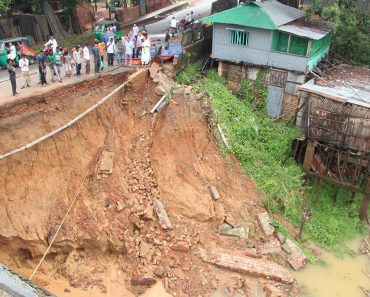
Landslides and mudflows can do tremendous damage to property, as well as cause loss of life.
If you want to ensure that your home is not vulnerable to landslides, get a ground assessment of your property.
Your county geologist or county planning department may have specific information on areas vulnerable to landslides.
Here are some other tips:
Plant ground cover on slopes and build retaining walls – but remember: if you build walls to divert debris flow and the flow lands on a neighbor’s property, you may be liable for damages.
- Learn landslide warning signs, such as: doors or windows sticking or jamming for the first time; new cracks in plaster, tile, brick, or foundations; outside walls, walks, or stairs pulling away from the building.
- Have an evacuation plan; include at least two different routes since roads may become blocked or closed.
- Ask an out-of-state relative or friend to serve as the “family contact.” After a disaster, it’s often easier to call long distance – and there’s less chance this contact has been affected by the same disaster.
- If a landslide or mudflow happens while you’re inside, stay inside and take cover under a desk, table, or other piece of sturdy furniture.
- If a landslide or mudflow happens while you’re outside, try to get out of its path. Run to the nearest high ground as long as it’s not in that path. The next-best bet is a group of trees or a building. If no escape is possible, curl into a ball and protect your head.
- Afterward, stay away from the slide area. There may be additional slides.
- Flooding may also follow a mudflow or a landslide.
- Replant damaged ground as soon as possible since erosion caused by loss of ground cover can lead to flash flooding.

